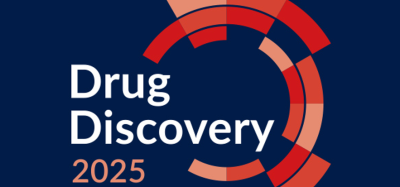‘Transformational’ machine learning method may speed up drug discovery
Posted: 1 December 2021 | Anna Begley (Drug Target Review) | No comments yet
Transformational machine learning (TML) learns from multiple problems and improves performance while it learns, potentially accelerating drug discovery.


Scientists from Sweden, UK, India and Netherlands have developed a new approach to machine learning (ML) that ‘learns how to learn’ and out-performs current ML methods for drug design, which in turn could accelerate the search for new disease treatments.
The method, called transformational machine learning (TML) learns from multiple problems and improves performance while it learns. TML could accelerate the identification and production of new drugs by improving the machine learning systems which are used to identify them. The results are reported in the PNAS.
Most types of ML use labelled examples, and these examples are almost always represented in the computer using intrinsic features, such as the colour or shape of an object. The computer then forms general rules that relate the features to the labels.
Reduce preclinical failures with smarter off-target profiling
24 September 2025 | 15:00PM BST | FREE Webinar
Join this webinar to hear from Dr Emilie Desfosses as she shares insights into how in vitro and in silico methods can support more informed, human-relevant safety decisions -especially as ethical and regulatory changes continue to reshape preclinical research.
What you’ll learn:
- Approaches for prioritizing follow-up studies and refining risk mitigation strategies
- How to interpret hit profiles from binding and functional assays
- Strategies for identifying organ systems at risk based on target activity modulation
- How to use visualization tools to assess safety margins and compare compound profiles
Register Now – It’s Free!
“It is sort of like teaching a child to identify different animals: this is a rabbit, this is a donkey and so on,” explained Professor Ross King who led the research. “If you teach a ML algorithm what a rabbit looks like, it will be able to tell whether an animal is or is not a rabbit. This is the way that most machine learning works – it deals with problems one at a time.”
However, King continued, this is not the way that human learning works. Rather than addressing a single issue at a time, we get better at learning because we have learned things in the past.
“To develop TML, we applied this approach to ML, and developed a system that learns information from previous problems it has encountered in order to better learn new problems,” King said. “Where a typical ML system has to start from scratch when learning to identify a new type of animal – say a kitten – TML can use the similarity to existing animals: kittens are cute like rabbits, but do not have long ears like rabbits and donkeys. This makes TML a much more powerful approach to machine learning.”
NEWS: Algorithm identifies cancer drugs to treat pulmonary hypertension
The researchers demonstrated the effectiveness of their idea on thousands of problems from across science and engineering. To ensure the generality and robustness of the evaluation, they utilised thousands of ML problems from three scientific domains: drug design, predicting gene expression, and ML algorithm selection. We found that TML significantly improved the predictive performance of all the ML methods in all the domains (four to 50 percent average improvements) and that TML features generally outperformed intrinsic features.
The team added that it shows particular promise in the area of drug discovery, where this approach speeds up the process by checking what other ML models say about a particular molecule. A typical machine learning approach will search for drug molecules of a particular shape, for example. TML instead uses the connection of the drugs to other drug discovery problems.
“I was surprised how well it works – better than anything else we know for drug design,” King concluded. “It is better at choosing drugs than humans are – and without the best science, we will not get the best results.”
Related topics
Analytical Techniques, Artificial Intelligence, Drug Development, Drug Discovery, Informatics, Technology
Related people
Ross King








